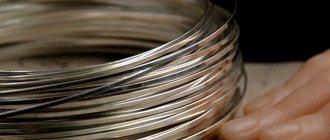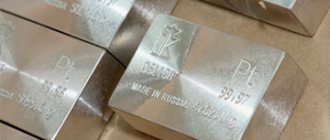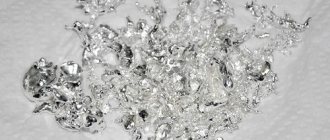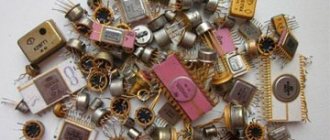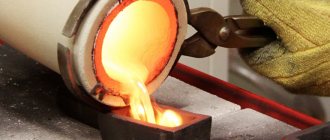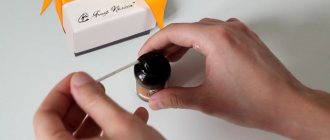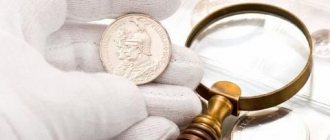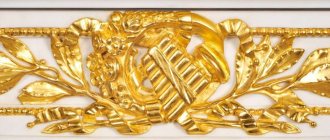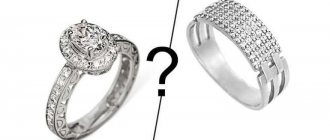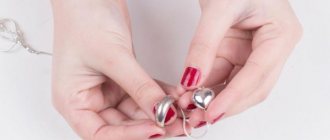December 14, 2019
To process scrap radio components with the subsequent release of silver, a physical and chemical process is used, which is called refining. It is a set of physical influences and chemical reactions that ultimately lead to the release of a precious metal of high purity. The method is quite time-consuming, since the speed of the chemical reaction is influenced by many factors, the main one being the degree of contamination of silver with various impurities.
The way in which the refining is carried out also contributes - do not forget that all operations will require chemical reagents, minimal skills in working with laboratory equipment and a safe environment for carrying out operations. Let's talk in more detail about the execution of the silver refining process using various techniques.
Why and in what ways is silver refining carried out?
Recently, the relevance of gold refining has dropped significantly. This is primarily due to the fact that there are fewer and fewer radio components produced in the USSR, which are being replaced by imported ones containing precious metals in very small quantities. But silver refining is becoming increasingly popular. Firstly, the demand for this metal is growing, as are prices. Secondly, silver is an industrial precious metal, so there are many more areas of its use, and accordingly there is plenty of silver scrap. In addition, the silver refining process is much easier.
Safety precautions
To ensure that silver refining does not cause various problems and injuries, it is necessary to follow a few simple precautions. With their help, you can avoid simple mistakes that will lead to unpleasant consequences.
Basic safety rules:
- The refining process can only be carried out in a well-ventilated area. The ideal option would be to perform the work in an open area. This will help dissolve various chemical compounds without harm to health.
- When preparing the solution, you should take into account the fact that it is forbidden to add water to acid (sulfuric, hydrochloric, nitric and others).
- During work, the respiratory system should be protected from the negative effects of harmful chemical compounds. To do this, it is recommended to use a respirator or a homemade gauze bandage.
- It is prohibited to refining silver without safety glasses. Neglecting this rule can lead to the ingress of various chemicals that will cause severe eye burns and serious vision problems.
- All work with chemicals should be carried out only with special gloves. They will protect your hands from accidental contact with acid and other chemicals.
Silver refining is a difficult process that requires certain knowledge and skills. If the work is carried out correctly and all safety measures are followed, you can avoid any problems and successfully complete the job you started.
What is this procedure?
In order to obtain metal in its pure form, technologies are used to clean it from impurities. Refining is a combination of such technologies. This procedure is a purely industrial process, but now it is not difficult to refining silver at home.
You can get silver from scrap jewelry, sludge from electrical silver cleaning, technological scrap, and silver foam. You can do this in three main ways:
- cupellation;
- electrolytic;
- chemical
Each of these methods has its own advantages and disadvantages. The choice depends primarily on the composition and condition of the products from which silver is mined, and the volume of production.
Best Cleaning Method
If things containing silver have a fragile structure, it means they contain a lot of additives (sulfur, antimony, tin, zinc and others).
Purification of metal from additives is called refining
– the process makes it possible to obtain high-grade silver using physical and chemical processes.
If you have certain knowledge, skills, special tools and equipment, this procedure can be carried out at home. It is used to cleanse:
- scrap silver jewelry;
- technical waste containing precious metals;
- electrical cleaning sludge;
- remnants of the lead industry.
Cupellation
Cupellation is used in the refining of low-grade alloys. This method does not allow the separation of platinum and gold; silver is mined from alloys with lead. This method uses a special marl-lined oven with a cup-shaped crucible.
The method is based on the ability of lead in an alloy with silver to oxidize in air and separate from the metal along with impurities. Marl is a porous limestone clay that absorbs lead oxide. During the cupellation process, lead oxide evaporates under the influence of air flow. Refining is considered complete when the alloy surface has a rainbow color. When this type of paint cracks, you can see the bright shine of the silver metal.
Chlorine refining
The method is based on the assumption that silver and base metals react faster than gold and the platinum family of elements in a chlorine atmosphere. This makes it possible to separate the latter substances from the substance being purified (in refining technology, the most labor-intensive process is the separation of noble alloys).
The molten rough gold is passed through chlorine gas. The interaction begins with non-noble impurity elements, then silver passes into the form of the compound, which can subsequently be isolated by other refining methods. Chlorides in the mixture float to the surface due to the lower density of salts compared to metals.
Electrolytic method
This method is most widely used for its versatility. It is produced in special cells, which consist of sandstone or plastic and contain a solution of silver nitrate.
To extract silver using the electrolytic method you will need:
- 70% nitric acid solution;
- distilled water;
- glass container or small soft plastic bucket.
Since you will need to work with acid, you need to remember some safety rules:
- The room where the process will take place must be well ventilated. Ideally, you should work outdoors.
- It is imperative to use protection: your hands must be gloved, and your eyes must be covered with goggles. It would also be a good idea to use a gauze bandage for the face to avoid burning the mucous membrane.
- It is important to remember that you should never pour water into an acid, especially sulfuric acid. Only acid - into water.
The step by step process looks like this:
- Nitric acid is diluted in equal proportions with distilled water. The amount of solution is determined by the amount of silver. It’s better to do less, and if the need arises, add more. For this refining method, it is necessary to obtain a silver nitrate solution of at least 20 g per liter, optimally 50 g per liter. Please note: this method is only suitable if your initial silver content is at least 80%. It is important that the material being processed contains as few metals as possible that are magnetic, otherwise it will be very difficult to extract them later.
- Make sure that the solution does not occupy more than a third of your container; the process can occur rapidly. The time it takes for a chemical reaction to occur depends on many factors: acid concentration, temperature, etc. Sometimes it can take up to eight hours.
- When silver dissolves, nitrogen dioxide is released as a gas, which has a brown tint. The solution may change color towards the end of the reaction: it becomes bluish if the original alloy contained a lot of copper, greenish - due to iron.
- After finishing, pour the solution into a separate jar and let it cool. At this stage, if the solution has a blue tint, then the bulk of the metal dissolved in it is silver. If its color is different, then there is a need for further processing.
- The next step is to obtain a silver precipitate. It is displaced from silver nitrate with the help of copper. Take a solution of silver nitrate and add copper. Copper wires or tubes are suitable for this purpose. They must first be cleaned to remove dirt and oxides from the surface.
- After adding copper to the solution, a chemical reaction begins, which occurs quite quickly; silver in powder form is deposited on the copper. To speed up the process, shake the silver cement back into the solution.
- Upon completion of the process, it is necessary to filter the precipitate and melt it into ingots. The result is 980 sterling silver. Pure silver is already extracted from it using the electrolytic method. We will use the resulting silver as an anode. For the cathode we take stainless steel plates. As an electrolytic bath, we use a plastic vessel filled with a silver solution obtained earlier. The voltage should be between four and eight volts at a current of up to 5 mA.
Recommendations
Since work is carried out with aggressive chemicals, it is necessary to strictly follow the safety rules:
- be sure to ensure good ventilation of the room (it is better to work outdoors);
- use skin and mucous membrane protection: gloves, goggles, masks or gauze bandages;
- add only acid to water, never the other way around.
- check for the presence of a chemical reagent by dropping the shavings using tweezers. If it does not dissolve, add HCl to remove zinc from the deposited metal.
You can make good money by purifying silver and refining it. The profit in this business will be many times greater than the costs.
Chemical method
The chemical method is used to extract silver from solutions or salts. First, silver sulfate is obtained by adding sodium sulfate. When ammonium chloride or table salt is added, silver chloride is obtained. The resulting liquid is left to stand until it is separated into fractions. One of them is transparent, the other is cloudy.
Silver is extracted from silver chloride using the soda method or the dry method. To do this, it is mixed in equal proportions with potassium carbonate and melted. At the end of the procedure, the metal is heated and melted again.
Silver refining is considered a fairly profitable business. Now he has another advantage associated with restrictions on the sale of precursors, which include sulfuric acid, necessary for refining gold. The profit far exceeds the costs; according to some data, up to 250% of income can be obtained from mining pure silver.
Source
Carbonate method for separating silver from chloride
This technology involves obtaining pure silver from dried chloride - the substance is combined with an equilibrium amount of sodium carbonate. In the crucible, the resulting mixture is heated (the bowl only needs to be filled halfway due to the increase in the volume of the contents due to the release of gas). After the formation of volatile products is complete, the process temperature increases, reaching the values necessary for smooth melting.
After the system has cooled, the silver is removed and re-smelted, after which the product can be considered ready. A negative point may be the fact that technical soda has a negative effect on the condition of the crucible. The main advantage of this method of chemical refining is its speed.
Silver refining: features and methods
There are many ways to obtain silver and some other precious metals by purifying them from impurities, some of which are possible only in industrial enterprises and chemical laboratories. However, there are methods that allow you to refining silver at home.
We will talk about them in our review.
How the path is chosen
For initially high-grade silver, electrolytic refining is used. Typically, when using this method, there is daily production. Electrolysis helps to obtain silver of exceptional purity due to redox reactions, in which impurities do not enter during purification.
In the case when argentum is in the form of a solution (insoluble sulfates and chlorides), the most economical and convenient way to deposit the metal is the chemical (in some situations, electrochemical) method.
Low-grade alloys are most often separated using cupellation - in this case, it is easiest to increase the purity of the mixture.
The essence of the procedure
In order to obtain purified silver from technical silver, techniques are used to rid it of various impurities. The combination of all methods is called refining. At its core, this procedure is an industrial process, but all the necessary manipulations can be performed at home.
For cleansing, you can use items such as:
- any silver jewelry;
- sludge obtained during electrical processing of argentum;
- technical scrap containing impurities;
- lead industry waste.
Pure argentum can be obtained from radio components, silver-plated parts and silver contacts, as well as fragments of ores obtained during mining.
Home methods of silver refining include the following techniques:
- chemical chlorination;
- cupellation;
- electrolysis.
The final choice of refining option depends on factors such as:
- amount of metal processed;
- the ability to ensure continuity of the technological process;
- the initial state of the alloy being processed.
Introduction
Jewelry making in Rus' has existed since ancient times. Back in the 20th century, Russian silver jewelry was famous for its beauty and sophistication. Even the Byzantines bought products made by Russian craftsmen.
However, in the 18th century there was an urgent need for silver. Therefore, since 1746, the St. Petersburg Mint began to systematically separate and clean metal from the Nerchinsky and Kolyvano-Voskresensky factories using wet and dry methods. Both refining methods were developed by I. A. Schlatter.
There is information that the silver production of the Kolyvano-Voskresensk factories was 3 tons. By the 70s. In the 18th century, production of the precious metal increased to 16 tons per year. After this, the state was able to completely manage with its own silver, without the need to purchase it abroad.
Required Tools
The set of basic ones directly depends on which method of obtaining silver you have chosen.
So, to refining Argentum elements you will need:
- glass container;
- quartz stick;
- Nitric acid;
- ammonium chloride;
- salt;
- sodium sulfide;
- any filter;
- funnel;
- deionized water;
- copper scrap.
When carrying out cupellation, you must prepare:
To perform electrolysis you need:
- power unit;
- insulating material;
- stainless steel fork;
- insulating tape;
- tea bag bag;
- any plastic container.
Where is silver found?
The main source of technical silver is radio equipment and electrical industrial equipment of Soviet production.
You need a considerable number of “silver plated” contacts, which
can be extracted from the following devices, radio components and devices that have expired:
- mine magnetic starters;
- mine substations;
- relay;
- temperature sensors;
- communication equipment;
- electrical computer equipment of modern and ancient production.
Precautionary measures
Silver refining is quite a profitable business. But since some chemicals are used during metal cleaning, safety rules must be followed.
The first thing you should pay attention to even before starting work is the possibility of ventilation of the room in which silver cleaning activities will be carried out . The ideal option would be to carry out work outdoors - this will prevent poisoning from dangerous chemicals. If this is not possible, then you should choose a room in which a powerful hood is installed, and there are also windows that can be opened if necessary.
To protect the skin, eyes and mucous membranes, you should wear rubber gloves, special glasses and always a gown.
When working with nitric acid, you must additionally wear a respirator, otherwise the vapors of this dangerous substance will enter the lungs and cause paralysis of the upper respiratory tract.
Refining in other cases
If there is a copper impurity in silver, it is rational to speak not of an alloy, but of a mixture of metals (can be presented in the form of shavings). Then the base metal can be dissolved with nitric and sulfuric acids. Concentrated substances are used cold or hot (the speed of the reaction depends on this).
To remove the silver shell from products, the mixture is heated over an alcohol lamp or in a water bath. At temperatures below 50-60 degrees, you can use glass or porcelain dishes. In the same way, you can separate the metal being purified from nickel, tin or lead.
Methods
Chlorination
This method is used to obtain precious metals from solutions. The procedure for cleaning silver from additional impurities at home in this case includes several steps.
- Initially, some sodium sulfate is added to the solution to form silver sulfate. After the compounds react with each other, ammonium chloride is added to them - as a result of this reaction, silver chloride is obtained.
- The liquid formed during these reactions is left to settle for some time so that it is divided into separate fractions. The result should be two separate solutions - one clear, the other cloudier.
- After chemical refining of silver, the silver itself must be separated from the solution; this will require a funnel, as well as a paper filter.
- The entire solution is poured into a bag - the liquid will flow into a plastic container, and powdered metal will be visible on the paper.
- All the resulting powder should be dried and fused into a single whole - this is low-grade silver chloride. It is necessary to extract pure metal from it using a dry method. To do this, it is mixed with calcium carbonate in equal proportions and melted.
Silver is considered completely purified if no turbidity is visible during the repeated addition of salts.
Cupellation
Cleaning of low-grade technical argentum is carried out using cupping. This technology is based on the unique property of lead, molten with argentum, to oxidize in the open air and separate from the metal itself along with other impurities.
To perform cupping, you will need a bowl-shaped stove completely covered with marl. For reference: marl is a rare porous limestone clay. It has a characteristic feature that promotes maximum absorption of lead oxides.
The step-by-step technique for removing silver is as follows.
- The oven is thoroughly heated and test tubes filled with technical argentum, as well as lead, are placed in it.
- The crucible is heated until it melts completely. Upon completion of the thermal reaction, the crucible is removed and its contents are poured into pre-prepared molds.
- After the composition has completely cooled, it will have a rainbow tint. This means that it contains not only silver, but also some other precious metals.
Obviously, in the course of all manipulations it is possible to obtain an alloy of argentum with gold or platinum.
How to restore silver with copper
User Registration: 02/24/2009
Messages: 1852 Friends: 1 Votes: 116 / 20
User Registration: 11/27/2010
Messages: 9 Friends: 0 Votes: 0 / 0
User Registration: 09/13/2011
Messages: 5 Friends: 0 Votes: 0 / 0
2Leon.joyas In the same way: convert to chloride by adding salt, wash the precipitate and reduce silver with zinc in the presence of hydrochloric acid.
2The lemur was right in wait; my flask once exploded when I tried to precipitate silver oxide from its ammonia solution. But! I precipitated it with potassium hydroxide and, in addition, let it sit overnight. If silver is immediately restored from an ammonia solution using the “silver mirror” reaction, then there is no risk.
User Registration: 11/27/2010
Messages: 9 Friends: 0 Votes: 0 / 0
User Registration: 09/13/2011
Messages: 5 Friends: 0 Votes: 0 / 0
Reduction is the process of adding electrons. When dissolved in acid, the metal goes into solution in the form of positively charged ions. To reduce a metal, you need to transfer electrons to its ions. This can be done using electrolysis (the cathode is negatively charged) or using a more active metal, which itself will go into solution in the form of ions, and give up its electrons to the metal we need, and that metal will be reduced from the ion to the metal. School experience: lower an iron nail into a glass with a solution of copper sulfate. A layer of copper will fall out on the nail.
Metals have a range of activities: https://ru.wikipedia.org/wiki/%DD%EB%E5%EA%F2%F0%EE%F5%E8%EC%E8%F7%E5%F1%EA%E8 %E9 _%F0%FF%E4_%E0%EA%F2%E8%E2%ED%EE%F1%F2%E8_%EC%E5%F2%E0%EB%EB %EE%E2 More active metals are displaced from salts are less active. This diagram shows that gold and silver are low-active metals and can be reduced from salts even with copper, which is what you did.
The method of reducing silver with zinc simply produces purer silver. Perhaps with fewer losses. This is where the trick lies: during precipitation with chloride ions, only silver ions precipitate. The sediment can be easily washed, thereby further purifying it. And then the silver is reduced with zinc. Hydrochloric acid is needed to dissolve excess zinc and prevent it from contaminating the silver.
Getting pure silver at home is real!
To obtain pure precious metal, a technology has been developed to purify it from impurities. It was called refining. During this procedure, the metal goes through several stages of processing, which results in silver, gold or platinum of a given purity.
Silver refining is considered an industrial process, but nowadays white metal refining can be done at home. Typically used for cleansing:
- jewelry scrap silver;
- sludge from its electrical cleaning;
- technological silver-containing scrap;
- “silver foam” from waste from lead factories.
Refining consists of three parts: diluting the silver in nitric acid, solidifying the metal and fusing it, and refining itself by electrolysis (electrolytic method).
Now let's talk about everything in order.
Available tools and materials
To refining silver at home and obtain metal without impurities, you need a little knowledge of chemistry (at the high school level), as well as the following materials:
- nitric acid 68.8%;
- deionized water;
- glass container;
- scales;
- quartz and brass sticks;
- titanium crucible (container for fusion);
- copper tubes or any other copper products;
- coffee filters;
- any power supply;
- plastic lemonade bottle;
- stainless steel fork and electrical tape;
- tea filter;
- insulation tube.
Metal dissolution
The process begins by mixing acid and water. The acid must be diluted with water in a 1:1 ratio, stirred with a quartz stick and silver should be added to the mixture at the rate of 50 g of silver per 1 liter of water.
Attention: the acid pours into the water, and not vice versa; in addition, you must wear gloves and safety glasses. During the chemical reaction, the solution should turn blue. The process can take from several hours to days. The result is silver nitrate.
It is recommended to carry out refining outdoors or in a well-ventilated area.
Silver cement
The task of the next stage will be to obtain metal from silver nitrate. For this you will need copper. Since silver nitrate has a blue tint, it already contains copper. The lighter the solution, the better it is. You can use ordinary pipes as a source of copper. Old water pipes will do, they just need to be cleaned of dirt and deposits.
Pieces of copper pipes are placed in a silver solution. Copper serves as a catalyst and speeds up the process. The pipes quickly become covered with a silver coating - cement. Periodically, they need to be removed and the cement shaken into a jar of solution. Copper pipes gradually dissolve, releasing copper to silver nitrate. If there are not enough of them, new ones should be added.
The pipes can be left in this position for 1-2 days, periodically checking them and making sure that no foreign objects get into the container. The process ends with the formation of a sediment of silver cement at the bottom of the container and the cessation of the reaction.
The solution must be filtered. To do this you will need a funnel and several coffee filters. The sediment must be washed at least 5 times with clean water. Moisture evaporates from the remaining cement (you can wait until it evaporates naturally).
Do not rush to throw away the solution after filtration: it still contains silver. Add some table salt to it and keep it aside. After some time, silver chloride will appear in the container.
Silver cement, consisting of crumbs and dust, must be collected into a single piece. This is done by heating it in a crucible. You need to heat it evenly and slowly, otherwise the silver dust will fly in different directions. The silver obtained at the second stage at home is not pure; it can be conventionally designated as 980 fineness. The bar will undergo further purification by electrolysis.
